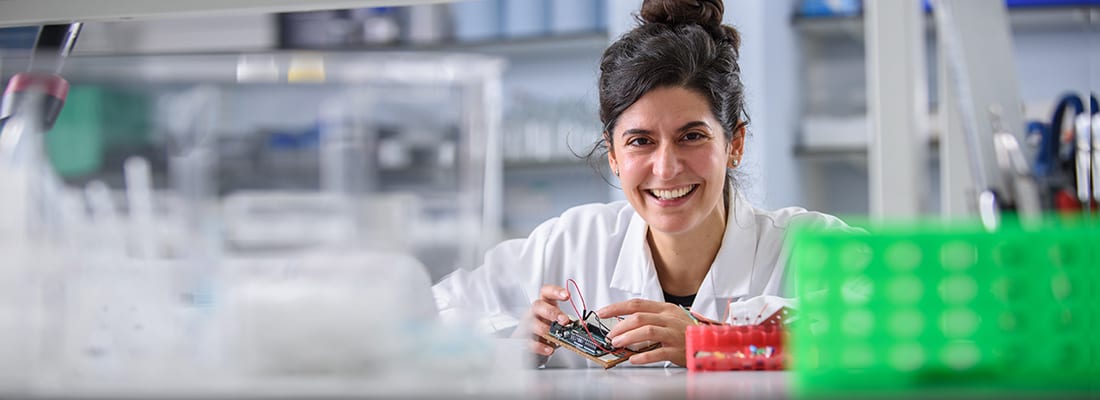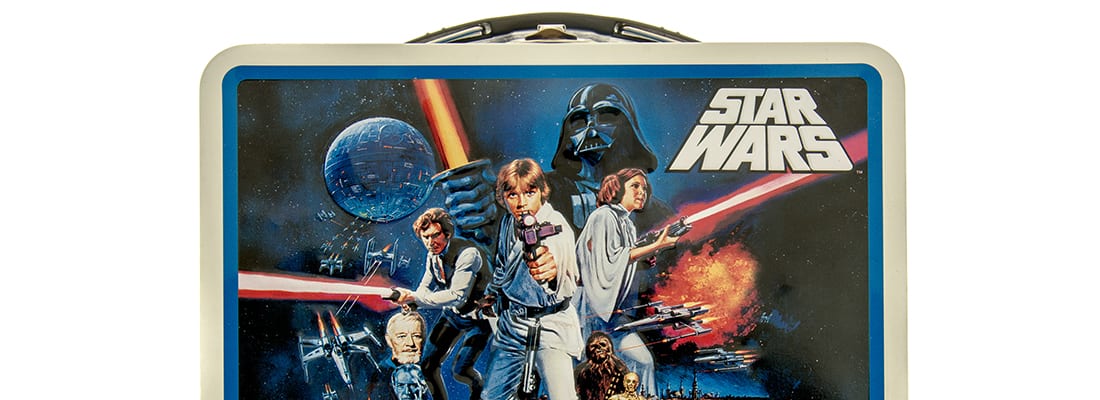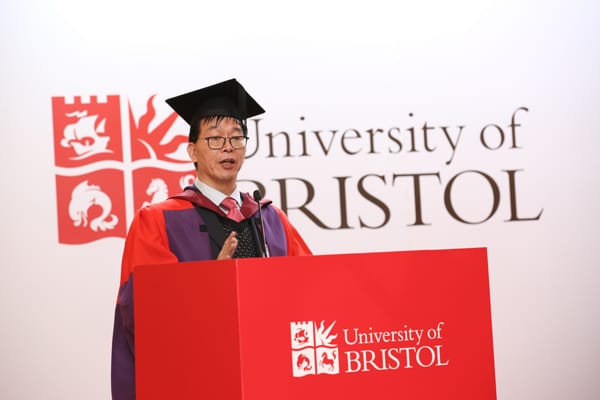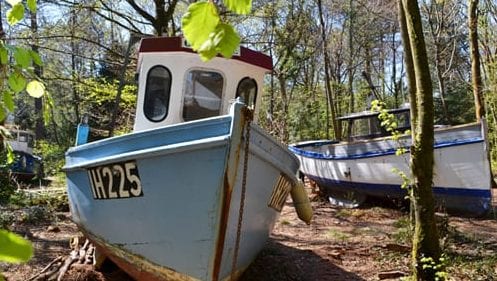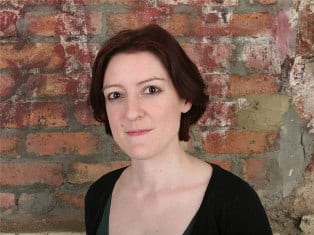Countless alumni meet their partners at Bristol. For some, it’s love at first sight and for others it takes a little more convincing (and dancing), but however they started, our alumni are still going strong, even decades later.
 Laura Riley (BA 1984) and Martyn Riley (BSc 1985)
Laura Riley (BA 1984) and Martyn Riley (BSc 1985)
My friends and I decided to adopt Martyn. We first met across the breakfast table at Clifton Hill House. During the first week of term, I noticed a handsome young man at the breakfast table. My five friends and I were looking out to be helpful to the new first years in hall and wanting to help them settle in. I think Martyn caught my eye because he was handsome (!) and I was on the lookout for a new boyfriend as over the summer I had broken up with my boyfriend of three years.
We were in the habit of having coffee in our rooms after dinner so we invited him back because we thought he looked like he needed looking after. He spent the next year asking us all out. However most of them turned him down, including me. Two of my friends Lizzie and Penny were already engaged.
It was towards the end of 1983 that we started going out and then we discovered by a chance chat with Penny that her fiancée was Martyn’s second cousin! Penny and Stephen were married in 1983, Martyn and I were married in September 1984 and Lizzie and John were married two weeks after us. We are all still married! Martyn’s late father was also a Bristol graduate and had met his mother in Bristol in the 1950s. Our son Jamie was born in 2001 and in two years he will be embarking on his university life with clear instructions that you go to university to get a degree AND a wife!!
Rahul Ravi (BSc 2012) and Lydia Ravi (née Murphy) (BSc 2012)
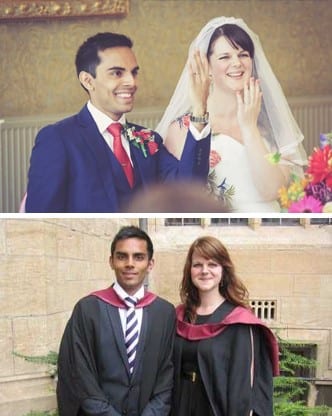 In September 2009 I moved to Bristol to begin a new chapter in my life; studying Economics and Maths at the University. Later that same year, at the Economics winter ball, I lent a girl called Lydia Murphy my jacket as we were walking back home. She was studying Economics and Management and so we got chatting; apparently talking extensively about multi-variable calculus isn’t a good pick up line!
In September 2009 I moved to Bristol to begin a new chapter in my life; studying Economics and Maths at the University. Later that same year, at the Economics winter ball, I lent a girl called Lydia Murphy my jacket as we were walking back home. She was studying Economics and Management and so we got chatting; apparently talking extensively about multi-variable calculus isn’t a good pick up line!
Nevertheless, we started dating in 2010 and had a wonderful time in Bristol completing our respective degrees before moving to London. Five years later I proposed to Lydia and in 2016 we got married back where it all began in Bristol! We had our ceremony at the Clifton Pavilion, Bristol Zoo, surrounded by many of our university friends and family.
We have very fond memories of Bristol and often visit. One day we would love to move back to the beautiful city!
Michael Upstone (BSc 1958) and Rosemarie Aston
 In February 60 years ago, I was in my final year at Bristol. I needed a partner to take to the Engineers Ball in the Victoria Rooms. A friend, John Bull, also an engineer, offered to find someone for me from the BRI where he had a girlfriend who worked in the X-Ray department. He was successful and arrangements were made.
In February 60 years ago, I was in my final year at Bristol. I needed a partner to take to the Engineers Ball in the Victoria Rooms. A friend, John Bull, also an engineer, offered to find someone for me from the BRI where he had a girlfriend who worked in the X-Ray department. He was successful and arrangements were made.
On the evening of the ball I went to the St Vincent’s Rocks Hotel in Clifton where my blind date was staying the night as she lived in Weston. She came to the lobby and I met Rosemarie, the love of my life! I think we walked from there to the Victoria Rooms as taxis were not an option on my budget!
The Engineers Ball in those days was a big event and we danced the whole evening to the music of Joe Loss and his Orchestra. Probably at the same event, Acker Bilk and his jazz band entertained us. Everything clicked and this dance was followed by more dances and dates in my final year at Bristol. I remember very happy lunches in the restaurant at Lewis’ in Broadmead, generally paid for by Rosemarie! When exams were over we went with a group of friends on the paddle steamer from Clevedon to Ilfracombe for the day.
We were married at St Johns Church in Weston-Super-Mare in April the following year. My best man was Patrick McMillan (BSc 1957). Now almost 60 years later we have a son and daughter and four wonderful grandchildren. We were truly blessed by the need to find a partner for the Engineers Ball and I have always been so grateful for everything that my time at Bristol gave to me.
Angela Dingle (née Berryman) (PGCE 1972) and Robert Dingle (PGCE 1972, MEd 1981)
 It was an attraction of opposites. Bob was over six feet tall and a physicist from Cornwall. I was a foot shorter than he was and an historian from County Durham, albeit with Cornish blood. We met on the second day of the PGCE course. A group of us had assembled informally and were discussing our first impressions of Bristol and plans for the weekend. As it was tea-time, we moved to the Student Union. Through accident or design, Bob and I found ourselves sitting opposite each other eating fish and chips, followed by strawberry yoghurt. Despite the unromantic surroundings, we discovered later that it was love at first sight for both of us! We rounded off the evening at the cinema on Whiteladies Road, watching “The Go-Between”. The film remains special.
It was an attraction of opposites. Bob was over six feet tall and a physicist from Cornwall. I was a foot shorter than he was and an historian from County Durham, albeit with Cornish blood. We met on the second day of the PGCE course. A group of us had assembled informally and were discussing our first impressions of Bristol and plans for the weekend. As it was tea-time, we moved to the Student Union. Through accident or design, Bob and I found ourselves sitting opposite each other eating fish and chips, followed by strawberry yoghurt. Despite the unromantic surroundings, we discovered later that it was love at first sight for both of us! We rounded off the evening at the cinema on Whiteladies Road, watching “The Go-Between”. The film remains special.
We had different interests too. Bob is a railway enthusiast, very musical, and a keen radio amateur. I prefer being in the garden, painting and going to theatres, galleries and exhibitions. Our relationship could have been a disaster. But we got to know each other really well and despite our differences, we shared the same values. We married in 1974 and are still together, over forty years later. We raised our son and daughter, studied for part-time doctorates in education in the hope that we would have a night out together each week and see something of each other! We will always remember our time in Bristol with great affection. Our experiences there provided the foundations of our marriage and family life, as well as of our careers.
Valentine Gardener (née van Wonterghem) (MSci 2008) and Henry Gardener (MSci 2008)
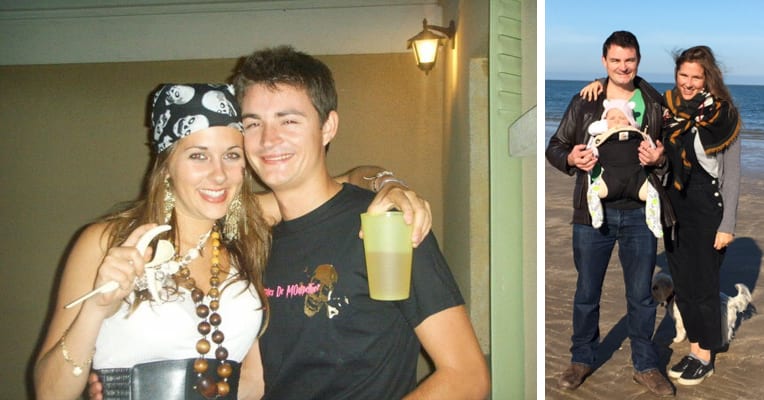
We met in the Chemistry laboratory at the end of my first year in 2005. Henry offered to help me with my experiment! I can’t remember what the experiment was just that I was glad Henry offered his help as it meant I was out of the lab early that Friday!
Our first date was a picnic at Ashton Court on a lovely crisp winter day. Henry took me in his Morris Minor (which really impressed me!!) and we got an amazing picnic from Chandos the deli on Whiteladies: bread, cheese, olives, meats and a bottle of wine. And the rest is history! We are now married with a 9 months old baby, Sophia.
—————————
Further information
Thank you to everyone who sent us their stories! Sorry we couldn’t feature them all.
Did you find love at Bristol? Let us know: we’d love to hear from you for next year.
 Fresh from winning the prestigious Queen’s Award for Enterprise for Innovation, alumnus Dr Tom Carter (PhD 2017), CTO and co-founder of technology firm Ultrahaptics, tells us about touching things that aren’t there.
Fresh from winning the prestigious Queen’s Award for Enterprise for Innovation, alumnus Dr Tom Carter (PhD 2017), CTO and co-founder of technology firm Ultrahaptics, tells us about touching things that aren’t there.

